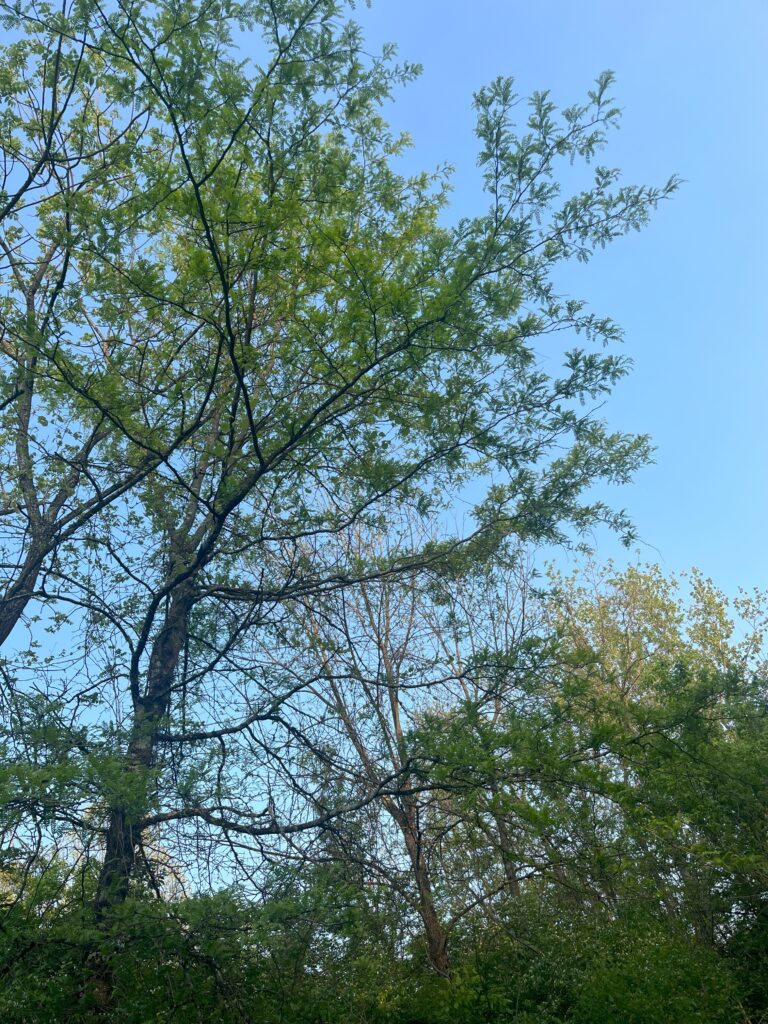Sugar Maple (Acer saccharum)
The first tree that I came across was this large sugar maple near a forest, which is distinguished by its opposite simple leaf arrangement with most leaves having 5 moderate lobes to them. Compared to other species of maples, this species’ leaves have less toothed edges and are moderately notched between the lobes. This tree really opened my eyes to the extent of my tree blindness as discussed by Popkin, as I was truly unsure of what type of tree this was until carefully studying its features and referencing my field guide. As the name implies, this tree’s sap is high in sugar and is the primary source of maple sugar and maple syrup products. (University of Maine)

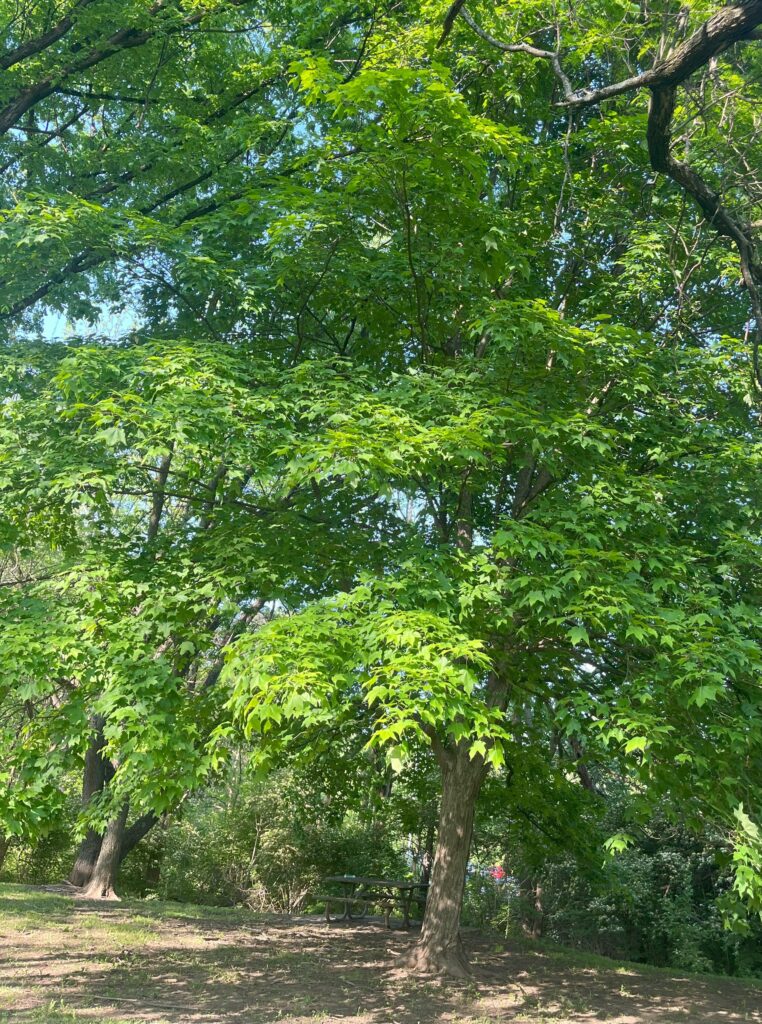
Ohio Buckeye (Aesculus glabra)
This next tree was found on a riverside leaning over the Olentangy river and is well known by OSU students as the Ohio Buckeye! This tree has an opposite compound arrangement for its leaves, which are palmately arranged into 5 leaflets. Some key features of the Ohio buckeye that differentiates it from others are that the leaves emit a foul odor when broken and the husks of the buckeye have small thorns adorning them. Although I couldn’t reach the lowest hanging leaves to check for this odor, I could certainly see the spiked husks. An interesting feature of this tree for human use is the lightweight wood that is often used in producing artificial limbs. (Ohio Department of Natural Resources)

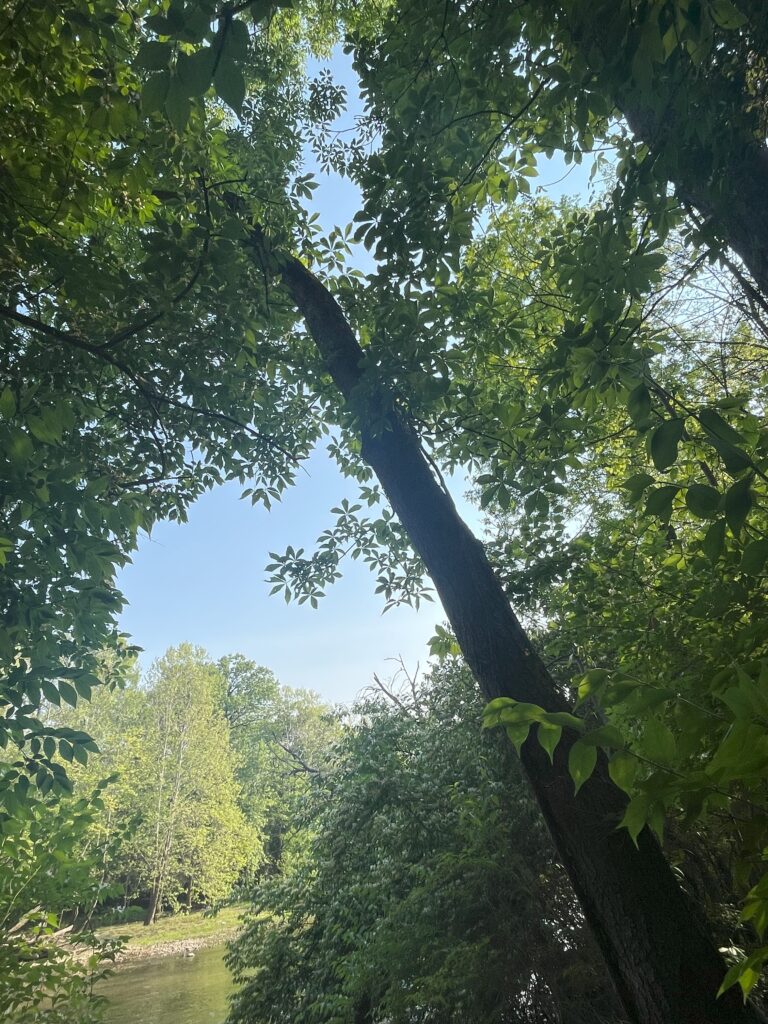
Honey Locust (Gleditsia triacanthos)
The Honey Locust caught my attention at first with its long thorns running along the underside of its twigs. Its leaves are alternately and pinnately compound arranged with a long stem and many tiny leaflets. I found this tree in a clearing in the woods at Highbanks Metro Park. A key feature of this tree distinguishing it from other locusts is the long thorns that have a tinier thorn protruding from the base of it, along with its dark brown and slightly rough bark. The wood from this tree is often used in the manufacturing of fencing and furniture, and it has historically been used for medicinal purposes in many Native American cultures. (Yale University, 2016)
White Oak (Quercus alba)
I was amazed at the size of this tree when I first came across it at the same Highbanks Park. Its leaves are lobed in a feather pattern and are alternate simple in arrangement on the twig. It is distinct from other oak species by the lack of bristle tips on the ends of each leaf lobe, which are all relatively even in length. The leaves also have slightly white undersides to them, which is where it gets its name from. The white oak is an important ecosystem for many species, with its leaves hosting the larvae of many species of butterflies. Many birds feed on these larvae during their breeding season for high nutritional value, and studies have shown there to be a higher diversity of bird species in white oak forests compared to nearby conifer forests. (Ecological Landscape Alliance, 2017)


Beech (Fagus grandifolia)
The beech tree is distinguished by its alternate simple leaf arrangement with toothed, oval-shaped leaves. Its most striking feature is the smooth, light gray bark of the trunk of the tree. This tree really stood out to me amongst the other trees with more roughened bark, and I’m sure I have passed hundreds of them without giving a second thought about what tree it was. I think the most fun thing about curing my ‘tree blindness’ is that I am slowly starting to see these trees more and more as I walk outside. A concerning disease has emerged since imported beech trees from the late 1800s brought along the beech scale as well as 2 other fungi, causing beech bark disease. By disrupting the bark’s smoothness and ability to transport nutrients, these fungi open up larger beech trees to infections or other wood-rotting fungi, eventually leading to their death. (Cary Institute, 2022)
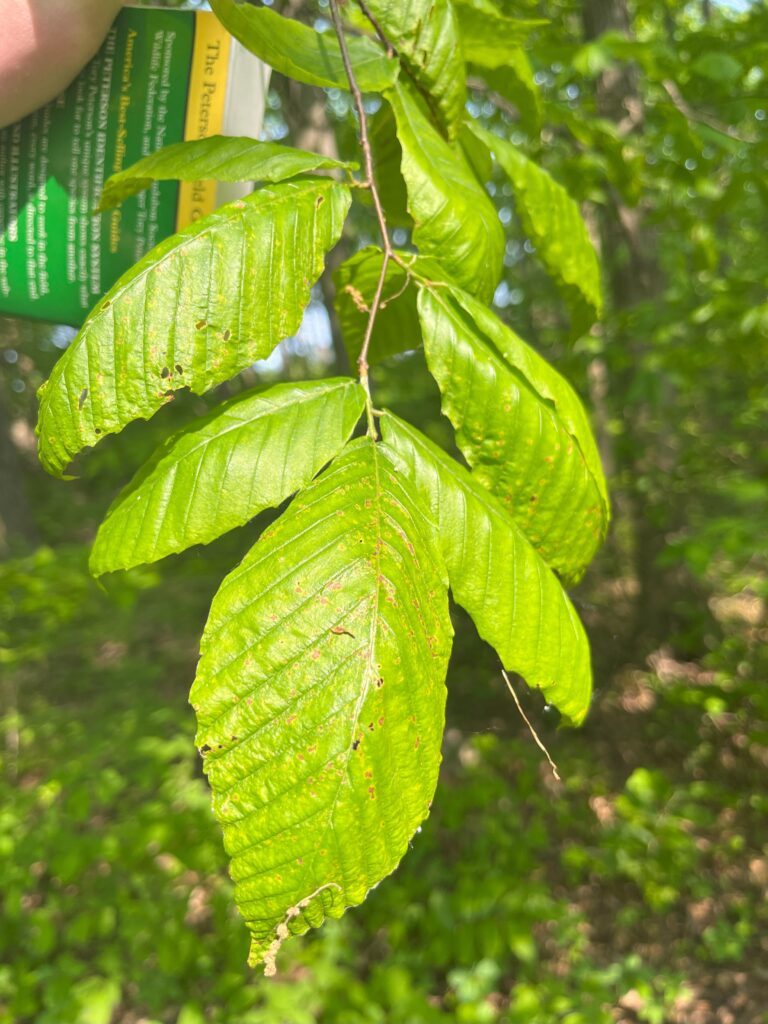
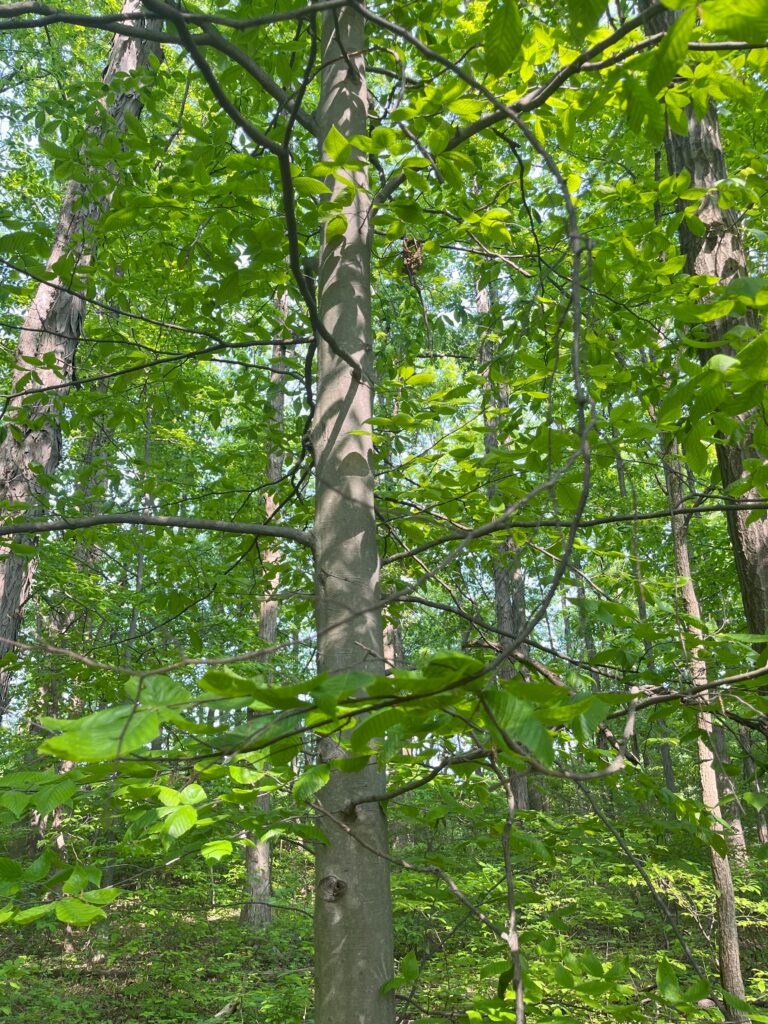
Shagbark Hickory (Carya ovata)
The alternate compound leaves of the shagbark hickory produce long, slightly toothed leaflets that taper towards the end. As its name implies, the bark of this tree is light-colored and very shaggy, with long strips overlapping one another. Its compound leaves are usually composed of 5 to 7 leaflets, hanging from stout twigs. These trees typically begin producing seeds at around 40 years old, and can live from 200 to 300 years old! (National Wildlife Federation)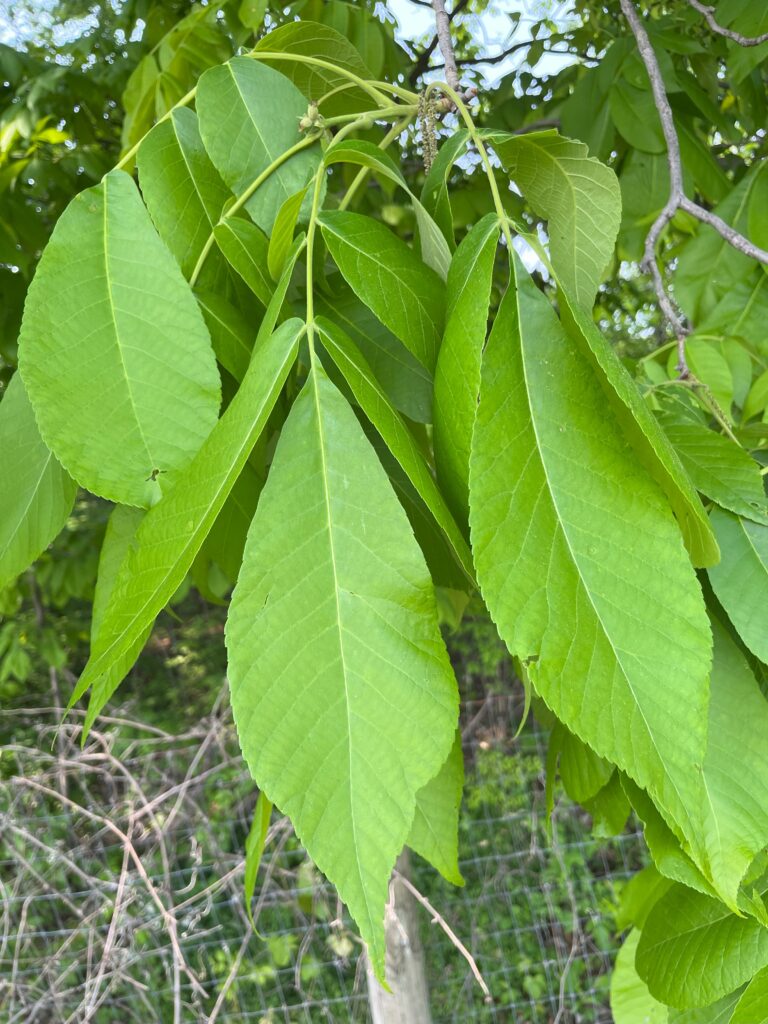

Red Mulberry (Morus rubra)
This tree caught my attention by the heart-shaped leaves and the clusters of immature drupes lining the stem. These trees have alternate simple leaf arrangements, with the leaves being toothed as well as fan-veined. The leaves of this plant may or may not be lobed, with this one having entire leaves. The fruits of this tree are eaten by many different kinds of wildlife, as well as used in the production of various jams and jellies by humans. (Missouri Department of Conservation)
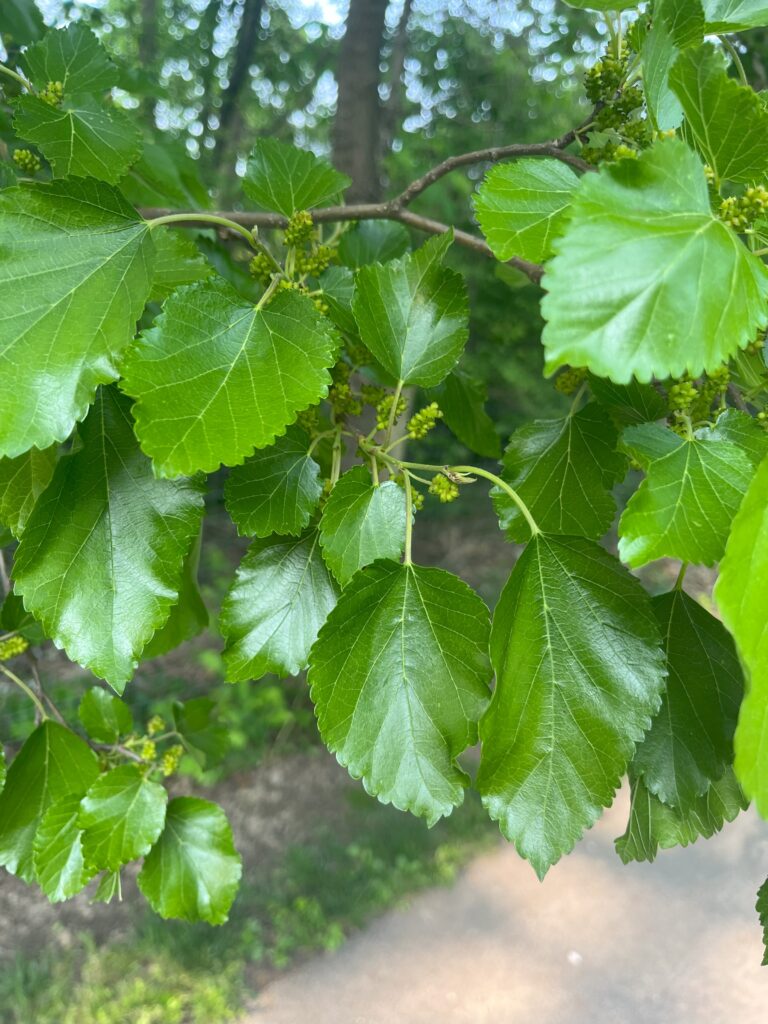

Tulip-Tree (Liriodendron tulipifera)
Saving the best for last is the tulip-tree! I was struck by the unique shape of the leaves that have a notch at the tip, which I later came to find out was named after the shape of the leaves resembling tulips. The leaves are in an alternate simple arrangement, with prominent pointed edges on the sides. There are also 2 large leafy stipules that enclose the end buds of each leaf. Relative to other foliage, livestock seems to prefer the leaves and stems of this tree, often leaving “browse lines” on older trees where they have been eaten. (US Forest Service)
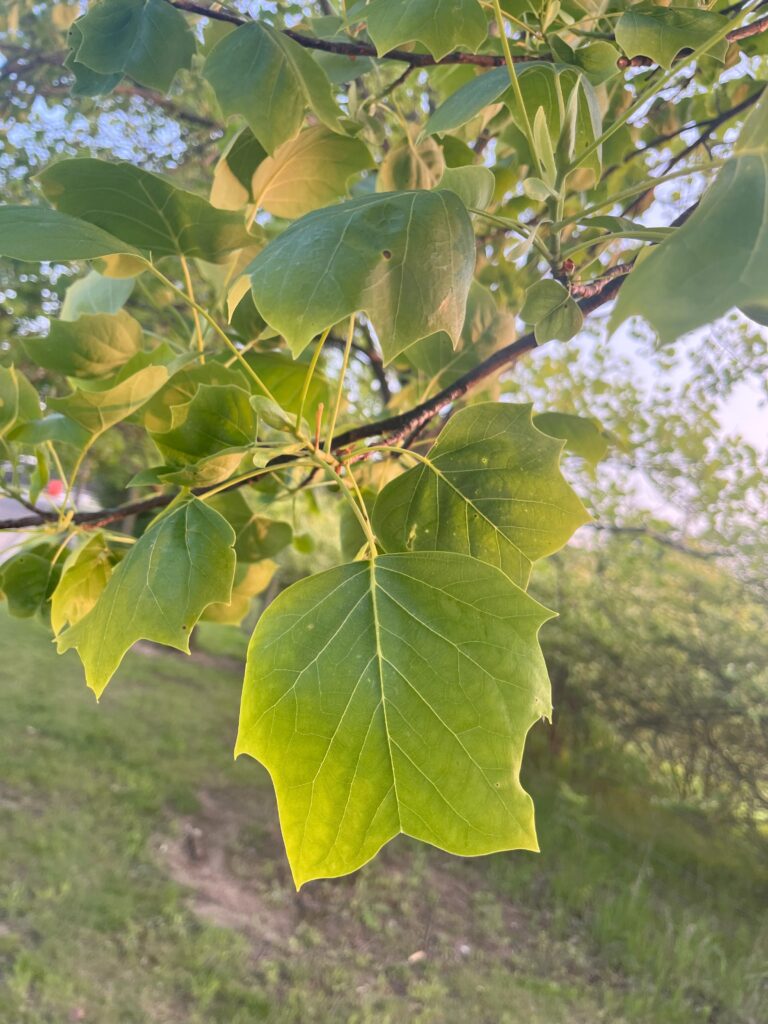

Sources
Ohio Buckeye | Ohio Department of Natural Resources (ohiodnr.gov)
Honey Locust | Yale Nature Walk
Prairie-Oak Ecosystems of the Pacific Northwest – Ecological Landscape Alliance (ecolandscaping.org)
Beech Bark Disease (caryinstitute.org)
Shagbark Hickory | National Wildlife Federation (nwf.org)


